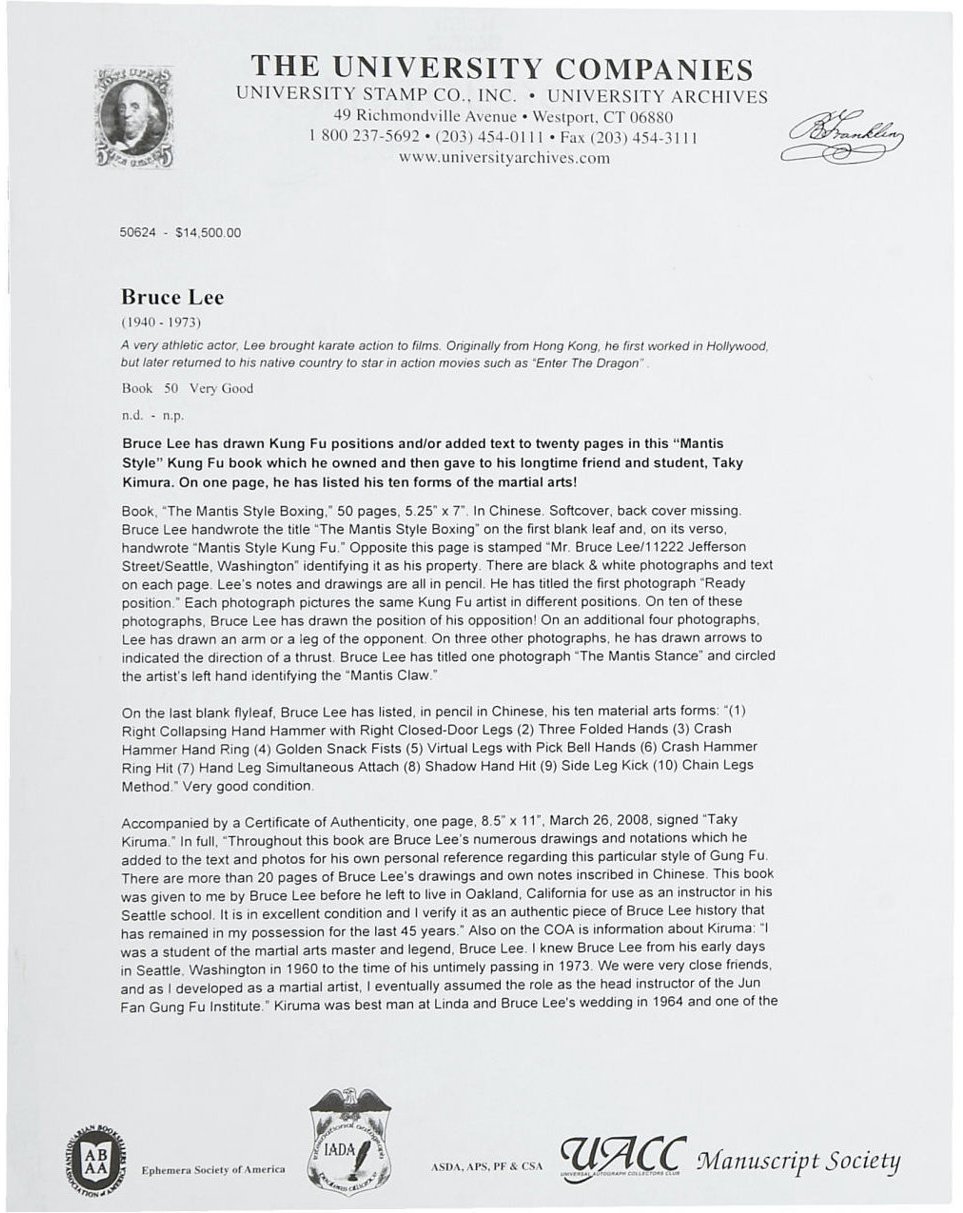Bruce Lee: The Mantis Connection
“When I first learned under Bruce… I was learning a set in Northern Mantis.” - Dan Inosanto [1]
Above: Photographs of the very Mantis Books that Bruce Lee owned. Note that Lee doodled on the leftmost and rightmost ones.
For years I have been tracking down the Praying Mantis Fist manuals written by Wong Honfan, a teacher in my martial lineage. Finding these volumes, a work originally undertaken for the sharing and preservation of these historically and culturally significant writings, is now mostly done and you can view the majority of these books here. Wong Honfan’s corpus detail everything from sword fighting and traditional medicine to empty-hand fighting techniques and martial arts theory. While the online public Archive I built housing his works was a first, there was someone decades before me very similarly engaged in the study, sharing and translation of Wong Honfan’s works: arguably the most well-known martial artist of all time, Bruce Lee. This article seeks to catalogue all of the known books on Praying Mantis Kung Fu that Bruce Lee personally owned.
Above: Bruce Lee created a “Gung Fu” scrapbook that included photographs cut directly from Wong Honfan’s books. Examining these pages he created is one way we can deduce what Praying Mantis manuals he owned, aside from the extant copies he wrote in.
Confirmed Mantis Books in Bruce’s Collection
1. Secrets of the Mantis Boxing Art (螳螂拳術闡秘)
Far Right: Bruce Lee’s kung fu scrapbook. Superimposed Above, Center and Left: Secrets of the Mantis Boxing Art (螳螂拳術闡秘), 1946, Volume 1 of Wong Honfan’s Northern Mantis Boxing series.
This book details a variety of topics including the history of Praying Mantis, martial arts strategies and techniques, where to strike an opponent on the human anatomy, hand conditioning (also known as “iron palm” training) and herbal recipes. After acquiring this manual, Bruce would go on to copy some of its material which would then be published posthumously in his book The Tao of Jeet Kune Do.
Left: Two sets of Eight places to strike an opponent, depending on whether the object is to subdue or kill, from Wong Honfan’s Secrets of the Mantis Boxing Art. Right: During his note taking Bruce Lee copied this theory character for character.[2] For a detailed article on this theory and Bruce’s interest in it, click here.
2. Avalanche Steps Boxing (崩步拳)
Far Right: Bruce Lee’s kung fu scrapbook. Left: Avalanche Steps Boxing (崩步拳), 1947, Volume 2 of Wong Honfan’s Northern Mantis Boxing series.
A fundamental set of moves in the Mantis Boxing art, Bruce Lee seemed to have a special affinity for this form bearing the same name as the book’s title, Beng Bu Quan (崩步拳). As detailed later in the article, not only would Bruce learn this series of techniques himself from a descendant of an actual Praying Mantis teacher, he would also personally work on bringing the entire contents of this book toward a wider audience…
3. Avalanche Steps Boxing Set Heavily Revised (重訂崩步拳)
Far Right: Bruce Lee’s kung fu scrapbook. Left and Center: Avalanche Steps Boxing Set Heavily Revised (重訂崩步拳), 1955, Volume 8 of Wong Honfan’s Northern Mantis Boxing series.
“Water can flow or it can crash. Be water, my friend.” Bruce Lee’s words on the Pierre Berton Show in 1971 share a similar theme with the 1955 text of the above Mantis book he owned. In the manual Wong Honfan writes “Some focus on using softness and adaptability, intent on yielding like water or absorbing like gauze, then follow up by drowning the opponent in endless waves.”[B] Wong Honfan then goes on to make several other comparisons between hard and soft, long range and short range, defense and offense, large moves and small moves, ultimately coming to the conclusion that Mantis combines all these strong points to yield the best results.
Left and Right: In Wong Honfan’s Mantis manuals, both his students and teacher (Luo Guangyu) are photographed performing the second move of Avalanche Steps Boxing (崩步拳): a diagonal filling punch (斜補捶), with the technique’s application explained [pictures reversed for illustration purposes]. Center: Bruce performs the same technique, albeit with a slightly different fist formation. He demonstrates this technique multiple times for various applications in his book Chinese Gung Fu: The Philosophical Art of Self-Defense.
Above: In his notes, Bruce Lee praised Wong Hongfan’s teacher “Law Kon Yuk” [Luo Guangyu] as “a giant who moved like lightning.” [Quote and images from The Tao of Gung Fu which contains notes from Bruce Lee published posthumously.]
4. Large Saber Techniques for the Army (軍中大刀術)
Far Right: Bruce Lee’s kung fu scrapbook. Superimposed Above, Center and Left: Large Saber Techniques for the Army (軍中大刀術), 1955, Volume 10 of Wong Honfan’s Northern Mantis Boxing series.
Here begins the first weapon book in the list. A former teacher of Bruce, Siu Honsan (邵汉生 1900-1994), would remark that Bruce preferred learning empty hand material suitable for modern applications; despite this preference, Bruce owned at least five of Wong Honfan’s weapon manuals.[3]
Left: A page from the Large Saber Techniques for the Army book, which contains the techniques Wong Honfan’s teacher taught to the soldiers of their time for use against the Japanese. Right: During the 1930’s and 1940’s, while the rest of the world issued trench knives to their soldiers, certain Chinese divisions were issued sabers to carry on their backs for close-quarters fighting when firearms were no longer an option.
5. Yan Qing's Single Saber (燕青單刀)
Far Right: Bruce Lee’s kung fu scrapbook. Superimposed Above, Center and Left: Yan Qing's Single Saber (燕青單刀), 1956, Volume 12 of Wong Honfan’s Northern Mantis Boxing series.
This manual features a form with movements typical of the Chinese saber: wrapping the saber around the head and back, cutting vigorously and picking up the legs to travel here and there, all while being mindful of the empty hand.
Right: Lee strikes a pose with a saber for a photo set. Left: Wong Honfan performs moves from the Eight Trigrams Saber (八卦單刀). In a 1977 magazine article, one of Bruce’s former teachers Siu Honsan noted that Bruce also practiced the Eight Trigrams Saber set. [3]
6. Tiger Tail Three-Section Staff (虎尾三節棍)
Far Right: Bruce Lee’s kung fu scrapbook. Superimposed Above, Center and Left: Tiger Tail Three-Section Staff (虎尾三節棍), 1956, Volume 13 of Wong Honfan’s Northern Mantis Boxing series.
Above: Wong Honfan on the rooftops of Hong Kong and Bruce Lee in a photo set, both with a unique Chinese weapon, the Three-Section Staff. Despite Bruce owning the Mantis Boxing manual for this weapon’s applications, he would instead go on to be famous for a different flexible weapon: the “nunchucks.”
7. Liuhe Double Sabers (六合雙刀)
Far Right: Bruce Lee’s kung fu scrapbook. Superimposed Above, Center and Left: Liuhe Double Sabers (六合雙刀), 1956, Volume 13 of Wong Honfan’s Northern Mantis Boxing series.
The above book deals with the Mantis school’s method of wielding two swords at once. While Bruce Lee owned the manual, the pairs of weapons he would become famous for using simultaneously on the silver screen were entirely different (namely double sticks and double nunchaku), and thus their techniques were not the same as the double sabers of Praying Mantis.
Above Right: A young Bruce Lee holds his brother hostage during an afternoon of literal sword-play. Above Left: Bruce as a teenager in fencing gear. From playing with jian to learning with his brother who became a world-class fencer, swords were very much a part of Bruce’s youth, which may have been one element that encouraged him to pick up four Mantis sword manuals by Wong Honfan.
8. Sundial Sword (子午劍)
Far Right: Bruce Lee’s kung fu scrapbook. Superimposed Above and Left: Sundial Sword (子午劍), 1958, Volume 19 of Wong Honfan’s Northern Mantis Boxing series.
Above: Sketches from the Sundial Sword manual juxtaposed with Bruce holding a Chinese style straight blade in period costume. Audiences almost saw Bruce wielding historical weapons as a wuxia character in the period film Dragon of Jade, but ultimately he turned down this role to star in Enter the Dragon.
9. Plum Blossoms Falling (梅花落拳)
Above: Bruce Lee’s personal copy of Plum Blossoms Falling (梅花落拳), published in 1958, Volume 20 of Wong Honfan’s Northern Mantis Boxing series. Inside he has sketched a literal praying mantis and written: “The Northern Mantis Clan” and “Property of Bruce Lee.”
Right: On page seventeen of a Mantis manual that Bruce owned, Plum Blossoms Falling, Wong Honfan performs a crushing backfist while trapping the opponent’s guard with the rear hand (崩捶). Left: This photograph (and others from various times in his life) depict Bruce utilizing this technique.
10. White Ape Leaves the Cave (白猿出洞 )
Above: Bruce Lee’s personal copy of White Ape Leaves the Cave (白猿出洞), published in 1958, Volume 22 of Wong Honfan’s Northern Mantis Boxing series. [4]
Interestingly for the future movie star Bruce Lee, the above book written in 1958 specifically addresses the subject of martial arts in movies and cinema. Praying Mantis master Wong Honfan admonishes the reader thusly:
“Film makes a deep impression on the mind, and so it can be a profound teaching device. A period martial arts film may cause a sensation for a while. The more care that is put into it and the more that quality is strived for means it has a better chance of grabbing the audience’s attention for a long time. But if it is poorly made or lacks a central plot, then it will quickly flop. [The outcome is that a good film will inspire people to train whereas a bad film will only make people look down on martial arts.]”[5]
One wonders if the text had a unique resonance with young Lee given his interests in story telling, martial arts and movies. Of the forty nine pages of techniques in White Ape Leaves the Cave, Bruce wrote commentary and sketched opponents on over twenty pages.
Above: Bruce’s address and writing visible above the author’s introduction and list of the manual’s moves. The author goes on to detail the rise and fall of Chinese martial arts, including topics such as the role of martial arts in film and fiction, Jingwu, and martial arts exhibitions for promotional purposes.
Above: Opponents sketched by Bruce. Mantis often kicks with the feet and strikes with the hands simultaneously (as seen above left), in the hopes of confusing and overwhelming the opponent.
Above: More opponents sketched by Bruce Lee. One wonders what the check marks above some photos indicated. Adoption of the move into Jeet Kune Do? A simple tallying during one day’s training? Who knows?
Above: A list of techniques Bruce wrote in the back of his White Ape volume. Technique number 1. reads:右崩捶右閉門腿 [Right Avalanche Punch, Right Door-Closing Kick]: A crushing back-fist move that simultaneously hits while also suppressing the opponent’s guard hand, followed by a low kick to the groin as the fighter leans back out of range from enemy attacks. Both of these moves appear often in Wong Honfan’s Praying Mantis sets, both individually and coupled together.
A TRANSLATION OF THE ABOVE MOVES LISTED BY BRUCE [6]
右崩捶右閉門腿 RIGHT AVALANCHE PUNCH, RIGHT DOOR-CLOSING KICK
三盤手 TRIPLE MILLSTONE HANDS
撞捶圈手 RUSHING PUNCH, SWINGING HAND
金蛇拳 GOLDEN-SNAKE PUNCH
虛腿摘玲手 FEINTING KICK, SNATCHING THE BELL
撞捶圈打 RUSHING PUNCH, SWINGING STRIKE
手腿齊攻 HAND & FOOT ATTACKING SIMULTANEOUSLY
影手擊打 SHADOW-HAND STRIKE
側身擊腿 SIDEWAYS BODY, STRIKE & KICK
連環腿法 CONTINUOUS KICKS
Above: “This book was given to me by Bruce Lee… for use as an instructor in his Seattle school.” Taky Kimura writes how and why he came to acquire this particular Mantis Fist manual in an official document signed by him. Thankfully for the purposes of this article, Bruce Lee’s ownership of such manuals is very well documented and not merely relegated to martial arts myth.
11. Small Frame Postures (小架式拳)
Above: Bruce Lee’s personal copy of Small-Scale Postures Boxing Set (小架式拳), published in 1959, Volume 25 of Wong Honfan’s Northern Mantis Boxing series. Lee’s English language cursive is evident throughout the manual.
Right: Bruce would go on to give this particular Wong Honfan book (among others) to Taky Kimura, one of only three individuals he personally certified as an instructor. [7] Left: Lee squares off against an opponent who passed away the same year as the penning of this article: Taky Kimura 1924-2021.
Above: With arrows and figures, Bruce illustrates a move that utilizes the first 3 of the 12 key terms in Mantis Boxing: 勾 摟 採 (Grab, Pull, Take).
Above: Pages 16 and 17. Bruce notes the grabbing, jerking hands of Mantis and writes in English “lap sao” (拉手), terminology from his Wing Chun backround.
Above: Pages 10 and 11. “MISSPRINT”
Above: A page from Small-Scale Postures Boxing Set, which Bruce owned and annotated, juxtaposed with Bruce employing a similar technique. Praying Mantis Kung Fu sometimes engages the opponent’s hands while kicking. The text from the 1959 manual is as follows: “The opponent advances to attack my middle area, and so I use both hands to hook away his attack, then use a swinging kick to do a raising attack to his groin.” 彼進前擬自我中路攻來,我卽用雙手刁去之,同時用圈脚法以撩其陰。[5]
12. A Study of Attacking Vessels, Acupoints, and Vital Areas – Vol 3: On Vital Areas by Pan Maorong
點脈•截穴•要害•之研究 要害篇 潘茂容
Far Right: Bruce Lee’s kung fu scrapbook. Superimposed Above, Center: A book by Wong Honfan’s kung fu brother who also studied Mantis under Luo Guangyu. This manual, A Study of Attacking Vessels, Acupoints, and Vital Areas [點脈•截穴•要害•之研究] utilizes Mantis Fist techniques to strike targets classified into three groups by the author: 點脈 (dian mai, more commonly known as dim mak) striking blood vessels to cause blockages and induce illness, 截穴 (jie xue) striking nerves to cause numbness and induce effects such as paralysis or dementia, and 要害 (yaohai) striking vital areas to disrupt organ function.
13. Miscellaneous Mantis Articles from Magazines
Far Right: Bruce Lee’s kung fu scrapbook. Superimposed Above, Center: 新武俠 (New Martial Hero Magazine) and 武術小説王 (King of Wushu Stories, later known also as Chinese Boxing Magazine). A few of the photos Bruce Lee possessed may have been pulled from magazine articles written by Wong Honfan in Hong Kong publications of the period.
Learning Mantis from his Kung Fu Uncle
Left: Wong Honfan’s teacher Luo Guangyu performs the fundamental Mantis set Beng Bu. Right: Siu Honsan (邵汉生 1900-1994), a student of Luo Guangyu, strikes the same posture from Beng Bu, a form he would later go on to teach Bruce Lee.
Books were not the only way Bruce Lee pursued the study of Mantis Fist. Back in Hong Kong, Bruce had a man who was like an uncle to him: Siu Honsan (邵汉生), a veteran of both the martial arts and film industry scene in Hong Kong. Long before he was internationally famous, eighteen-year-old Bruce would visit Honsan in the afternoons to sip tea and talk about a variety of topics, including kung fu; their discourse on Chinese martial arts included everything from discussing biographies of famous kung fu masters to the theory and techniques of specific boxing schools. Eventually, Bruce respectively asked if Honsan would instruct him in martial arts. An avid cha-cha dancer at the time, Bruce even made a proposal: he would trade cha-cha lessons for kung fu lessons. This would ultimately lead to Bruce receiving instruction in Mantis Boxing, among other styles.
Above: A portrayal by actors depicting Bruce Lee in 1950’s Hong Kong, offering to teach a Kung fu instructor dance lessons in exchange for tutelage in martial arts. In reality, this is exactly how Bruce would be introduced to several northern styles of Chinese martial arts, including Mantis.
In a 1977 interview, Honsan relates how he instructed Bruce in a variety of empty hand and weapon sets; of special interest to this article are his remarks involving Beng Bu (崩步拳), the same foundational Mantis set found in the Mantis books that Bruce owned.
“After Bruce had learnt Wing-chune-kune, he came to ask me to teach him some Kung Fu…. Later I taught him a set of Jumping step-boxing ( 蹦步拳 ) [Beng Bu].” After a stop, Sifu Siu continued, “This kind of boxing is a basic boxing form of northern Mantis Kung Fu. Its characteristics are jumps, skills, swift movements and the circular horizontal kick. But Bruce was very smart. He learnt it in six or seven lectures.”[3]
Above Right: The 1977 magazine which details Bruce Lee’s “TEN MASTERS.” Above Left: In a photo from the magazine, Bruce drapes his arm around one of his instructors and mentors, Siu Honsan, the man who introduced him to Mantis Boxing and other styles. In the featured interview years after Bruce’s untimely death, Siu Honsan lamented that Bruce passed so young, praising Bruce as not only a good student but a good man.
Above: A visual genealogy of how Mantis Fist techniques and ideas were passed on to Bruce Lee.
The Lost Game of Death Mantis Fight Scene
Above: Bruce Lee counters with a Mantis Hook in his recognizable track suit from his last film: the unfinished movie Game of Death. Interestingly, Bruce had planned an entire scene in which he fought a Praying Mantis master.
Given his brief time spent training Mantis Fist and his extensive Mantis book collection, perhaps it should come as no surprise that Bruce Lee planned on showcasing this fighting art in one of his movies, Game of Death. Bruce Lee envisioned fighting a Praying Mantis master, played by his student Taky Kimura whom he had gifted several of Wong Honfan’s Mantis manuals. Unfortunately, with Lee’s tragic death in the middle of filming the movie, the scene never materialized and whatever Mantis influence that would have ended up on the silver screen was not to be.
Above: Bruce Lee’s sketch for the five martial arts masters he would have to face as he climbed each level of the pagoda in his movie Game of Death. Note that level 2 is labeled “Preying Mantis → Fast & Direct Attack.”
Mantis Translation Efforts
It is Friday evening, Febuary 2nd, 1968. Bruce has already worked his core that morning so he opts for a few one-legged squats. He then sits at his desk and pulls out a notebook and a pencil, and writes:
Friday, February 2, 1968
11:00 AM
1. Side bend-6 sets
2. Leg raises -6 sets
3. Sit-ups-6 sets
6:00 PM
One-legged squat-2 sets
Looking over at his Beng Bu book by Wong Honfan, he adds:
Completion of translating The Peng Pu Chuan [8]
“Peng Pu” is a romanized spelling for transliterated characters: 崩步 [Beng Bu]. This references the form depicted in his Mantis books by Wong Honfan, the form he had been photographed performing applications from. Curiously, this recorded translation effort is marked 1968: after Bruce had denounced traditional Chinese martial arts in favor of creating his own style Jeet Kune Do. For whatever reason (and despite being a traditionalist no longer), Bruce Lee still saw value in this set of moves from the Mantis tradition as he dedicated his time to translating them into English, presumably with the aim of sharing this text and its applications with a wider audience.
Afterward
The purpose of this article has been simply to highlight the Praying Mantis Kung Fu manuals that Bruce owned, annotated and studied. The topic of which movements Bruce favored and kept from Praying Mantis, how or if he altered them, and even which moves he disregarded entirely: all of that remains a subject which has not even begun to be thoroughly and properly addressed.
Above: Not the same technique; Bruce is utilizing an eye gouging technique while Wong Honfan is not. Though it may be tempting for some to compare every similar posture between Lee and Wong in an attempt to find more of a Mantis connection, it must be remembered that such attempts can lead to exaggerated claims that have no basis in reality. Even a visual similarity between two postures is no guarantee that Bruce was consciously employing a Mantis technique.
It would be a mistake to over-emphasize the role these Mantis manuals had on influencing Bruce Lee’s own martial arts repertoire and line of thought. Far from only studying Mantis books, by the time of his death Bruce had amassed many books covering everything from Western fencing to Judo. As an incredibly hard-working and charismatic individual, Bruce would likely have been successful regardless of whether he owned a dozen Praying Mantis Kung fu books. As he ultimately eschewed the Chinese Martial Tradition and opted instead to create his own style, how much he actually even pulled from these manuals is up for debate.
Coincidence or Influence? Right and Left: Page thirty seven and six of a Mantis book Lee owned, Plum Blossoms Falling. Center: Bruce avoids a punch, swinging in a hit with the bony back of his wrist. In Praying Mantis Boxing, hooked hands are not always for grabbing but instead sometimes swing out with the back part of the wrist hitting the opponent. Was this move inspired by Bruce leafing through the pages of his Mantis library and experimenting with what he saw, or are the similarities here merely coincidence, the employment of a generic kung fu move that has no relation to Mantis specifically? Most likely the latter.
Further investigation as to the Mantis Fist influence on Bruce Lee is not without merit however. The dozen or so manuals confirmed to have been owned by Bruce are simply known because they have been auctioned publicly or because photographs of notes have been made public by his estate; what if Bruce had owned twenty Mantis books in total? Or thirty? The exact number will most likely never be known.
Left: Bruce Lee’s famous demonstration of issuing force over a small distance: “The One Inch Punch.” Right: A section from Wong Honfan’s books titled “Strength and Power” that details Inch-Length Power generation. This volume was published when Bruce was nine years old.
Could Bruce Lee have owned Volume 3 of Wong Honfan’s Mantis Series, which details the following:
“Inch-length power is also called ‘passive power.’ It travels merely from the wrist to the fingers and involves the slightest rotation. To apply boxing techniques requires some distance, but inch force can be applied even if you are already touching the opponent’s body, meaning that long-range power and foot-length power would not be able to catch up with it.
Power also divides into hard and soft. Most styles tend to emphasize one or the other, but Mantis Boxing uses both hardness and softness in equal measure, combining them to greater effect. Unless they are practiced equally, I fear it will be difficult to achieve the best results. I hope that my fellow practitioners will deeply study the mysteries within the art so that they can ascend to a level of elegance that much sooner.” [5]
Of course, those familiar with Bruce Lee’s famous One Inch Punch demonstration and his admonishments to blend hard and soft will immediately note the similarities. Such comparisons between a photo of Bruce here or his notes on Jeet Kune Do there could surely be made with the voluminous amounts of texts and photos Wong Honfan’ left behind. Some of these comparisons will be justified and undeniable, with Bruce himself having specifically taken notes on the pages of Wong’s work. Other seemingly accurate similarities between postures and quotes will in fact be mere coincidence, the patterns and ideas matching because they are both found more broadly in martial arts as a whole and not because Bruce was purposefully emulating Wong Honfan’s work.
Regardless of less historically grounded comparisons, the actual evidence and record is quite clear: Bruce took careful hand-written notes on the movements in Wong Honfan’s manuals. He gave these Mantis Fist manuals to Taky Kimura specifically for his use as an instructor in Bruce’s system. Not only was Lee personally taught a Praying Mantis form (Beng Bu): he then also taught it to his early students. [1,3] He absorbed moves and concepts from Praying Mantis into his personal repertoire, and even spent time translating a Praying Mantis form into English, (Wong Honfan’s Beng Bu book). It is quite safe to assume that this world-famous martial artist/actor had a degree of respect for Wong Honfan’s Praying Mantis Kung fu.
Author
Alexander Petty lives in Fort Worth, Texas, where he practices the Wong Honfan tradition of Praying Mantis Kung Fu.
Notes
Above: A page from Bruce Lee’s copy of White Ape Exits Cave by Wong Honfan.
[1] Title Quote “Bruce would go to [practitioners of other systems] and say ‘… I’ll trade you my Wing Chun knowledge for your Praying Mantis’… that’s what Bruce did… When I first learned under Bruce… I was learning a set in Northern Mantis.” Dan Inosanto within the first four minutes of: Interview with Dan Inosanto, Produced and Directed by Walt Missingham. (Copyright 2000, Phoenix Films Pty Ltd.), video. Link: https://www.youtube.com/watch?v=O4YkUbec5JQ&list=PL-XJ5qBEJMO1otxWmLD_5wwk8yP9jOupD&index=1
[2] Bruce Lee, The Dao of Jeet Kune Do, 1975
[3] 1977 Martial Arts Magazine “Bruce Lee: His Unknowns in Martial Learning”
[4] Images of Bruce Lee’s White Ape Leaves the Cave Mantis book by Wong Honfan courtesy of Heritage Auctions. Link: https://entertainment.ha.com/itm/music-memorabilia/autographs-and-signed-items/bruce-lee-s-annotated-mantis-style-boxing-martial-arts-booklet/a/696-49108.s
[5] Translated by Paul Brennan and sourced from Brennan Translations. View these and other works at https://brennantranslation.wordpress.com/
[6] Special Thanks to Paul Brennan for translating this list.
[7] This Mantis manual that Bruce passed to Taky Kimura would eventually go on to be auctioned sold for £52,000. https://www.dailymail.co.uk/news/article-3238473/The-book-Bruce-Lee-used-teach-Kung-Fun-sold-52-000-auction.html
Above: Yet more official documentation on Bruce Lee’s Mantis library.
[8] My thanks to Ryan Ohl for originally pointing this out to me. Sourced from: Bruce Lee, The Art of Expressing the Human Body, ed. John Little (North Clarendon: Tuttle Publishing, 1998), 203. In Ryan Ohl’s forthcoming book, Jun Fan Gung Fu: Origins & Evolution, Ohl seeks to trace the evolution and history of Bruce Lee’s personal art in terms of what he added from other styles; with a section dedicated specifically to the similarities between Northern Praying Mantis and Bruce’s fighting method, hopefully more will be revealed in terms of the exact techniques that Bruce sourced from Mantis Boxing.
Above: A page from Bruce Lee’s scrapbook featuring the Northern Praying Mantis School, with photographs predominantly featuring Wong Honfan and his teacher Luo Guangyu.
[9] Bruce Lee The Tao of Gung Fu, ed. John Little (North Clarendon: Tuttle Publishing, 2016), 186.
Images of Bruce Lee’s Praying Mantis Manuals courtesy of various auction houses. See for example https://www.chiswickauctions.co.uk/auction/lot/113-lee-bruce/?lot=116701 , https://www.liveauctioneers.com/item/39720624_lee-bruce-a-praying-mantis-style-kung-fu-book , https://www.liveauctioneers.com/item/48999083_lee-bruce-a-praying-mantis-style-kung-fu-book
Above: Wong Honfan and Bruce Lee throw the “Character Ten Kick” [十字腿], a common enough kick found in Wong’s Mantis writings.
All photographs of Bruce Lee are property of their respective owners. They are utilized here in a non-profit fair-use educational setting.
This Article was first published December, 2021.
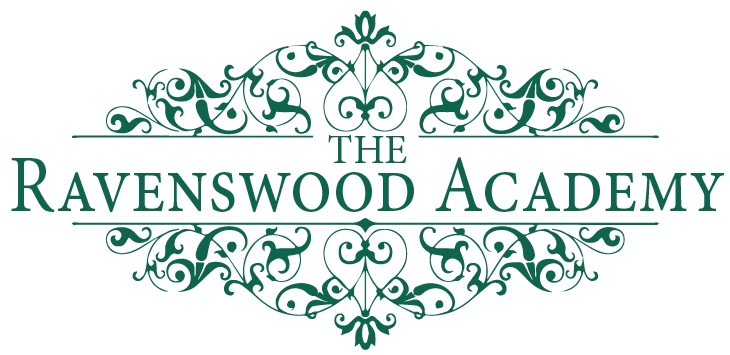



![Left: Two sets of Eight places to strike an opponent, depending on whether the object is to subdue or kill, from Wong Honfan’s Secrets of the Mantis Boxing Art. Right: During his note taking Bruce Lee copied this theory character for character.[JKD]…](https://images.squarespace-cdn.com/content/v1/57c1bd8403596ec73f1a54c6/1609175495638-60SZXG0JOIL7EGDF5S5P/New+Project%2811%29.jpg)



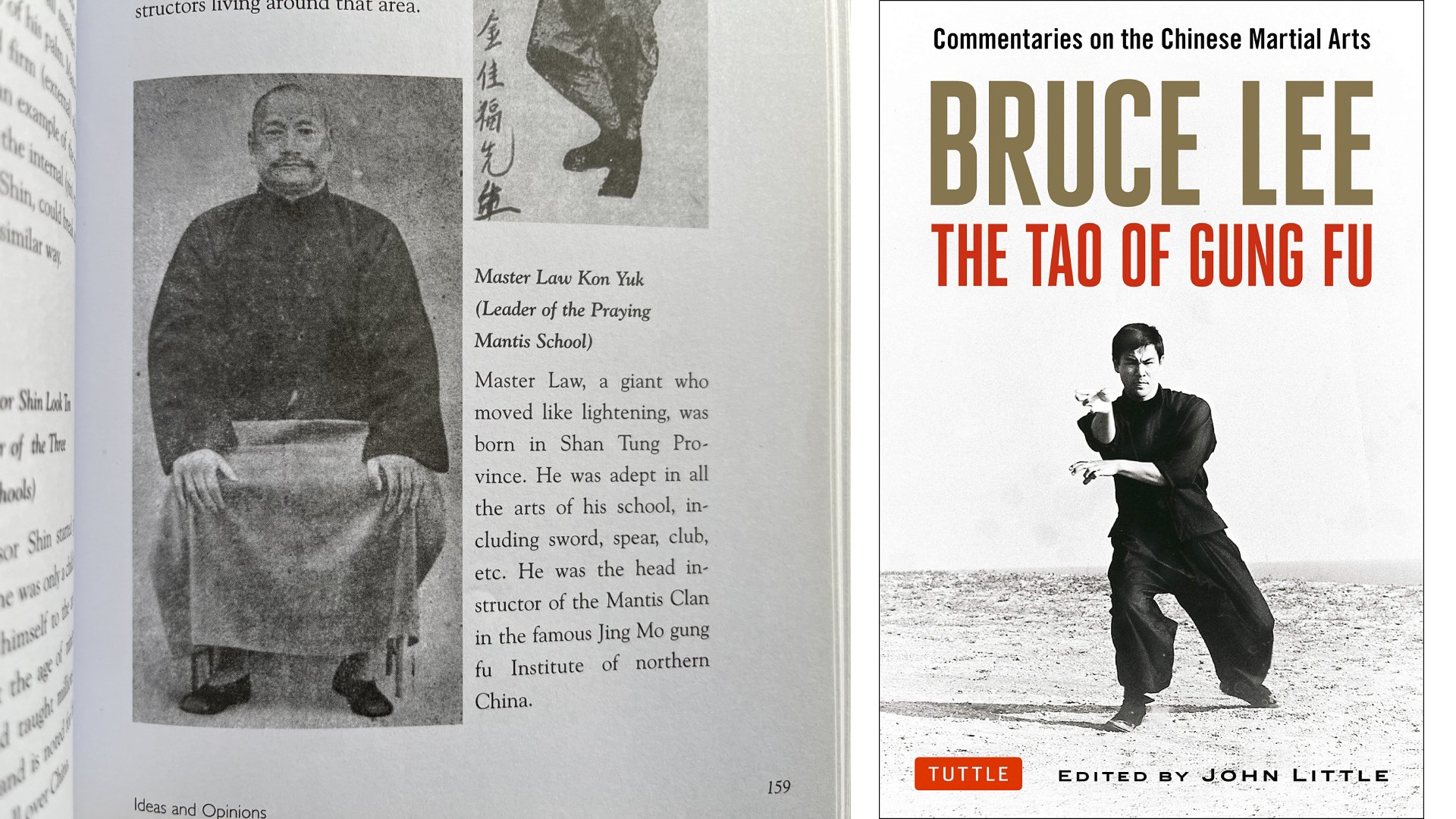









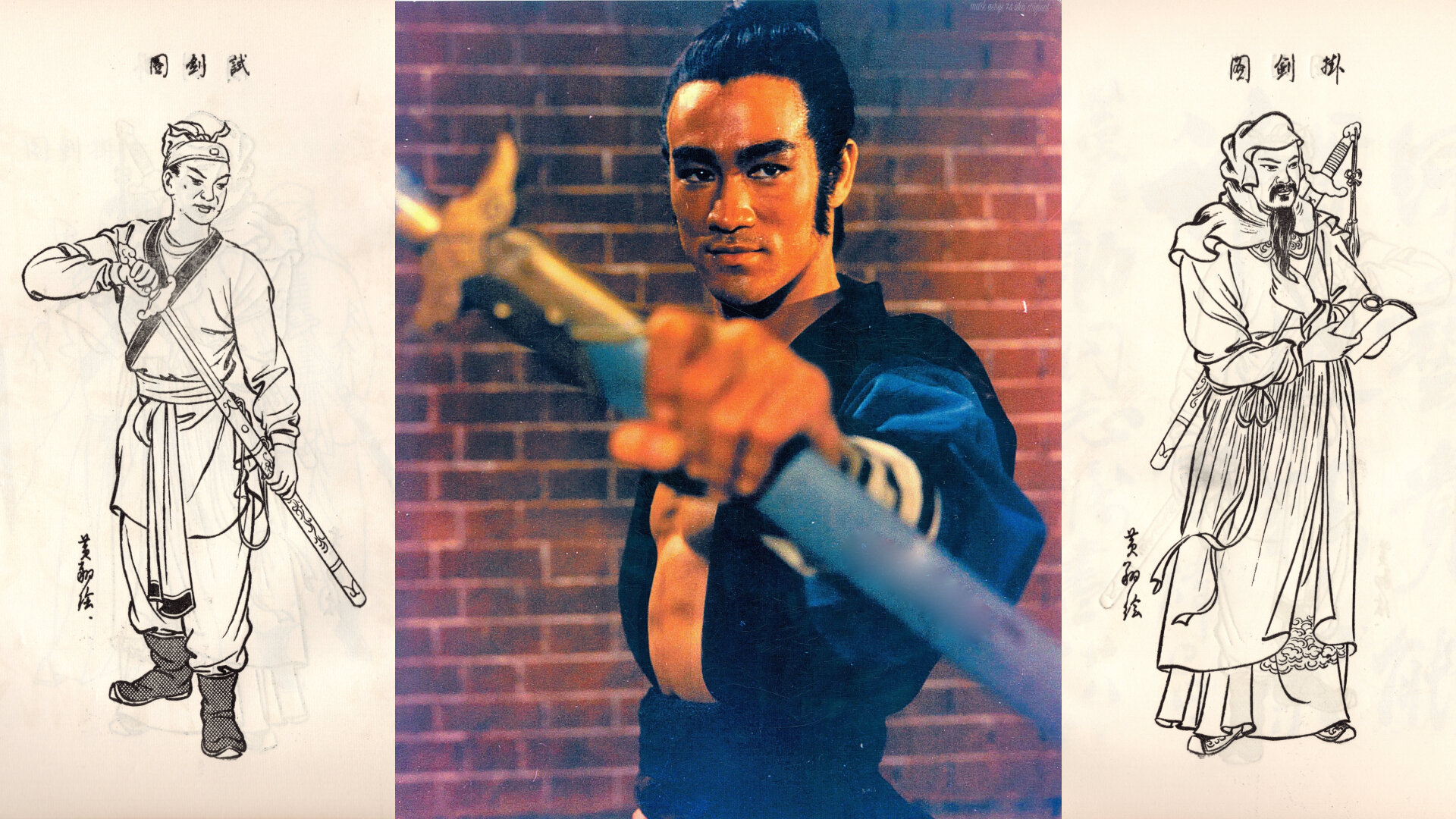

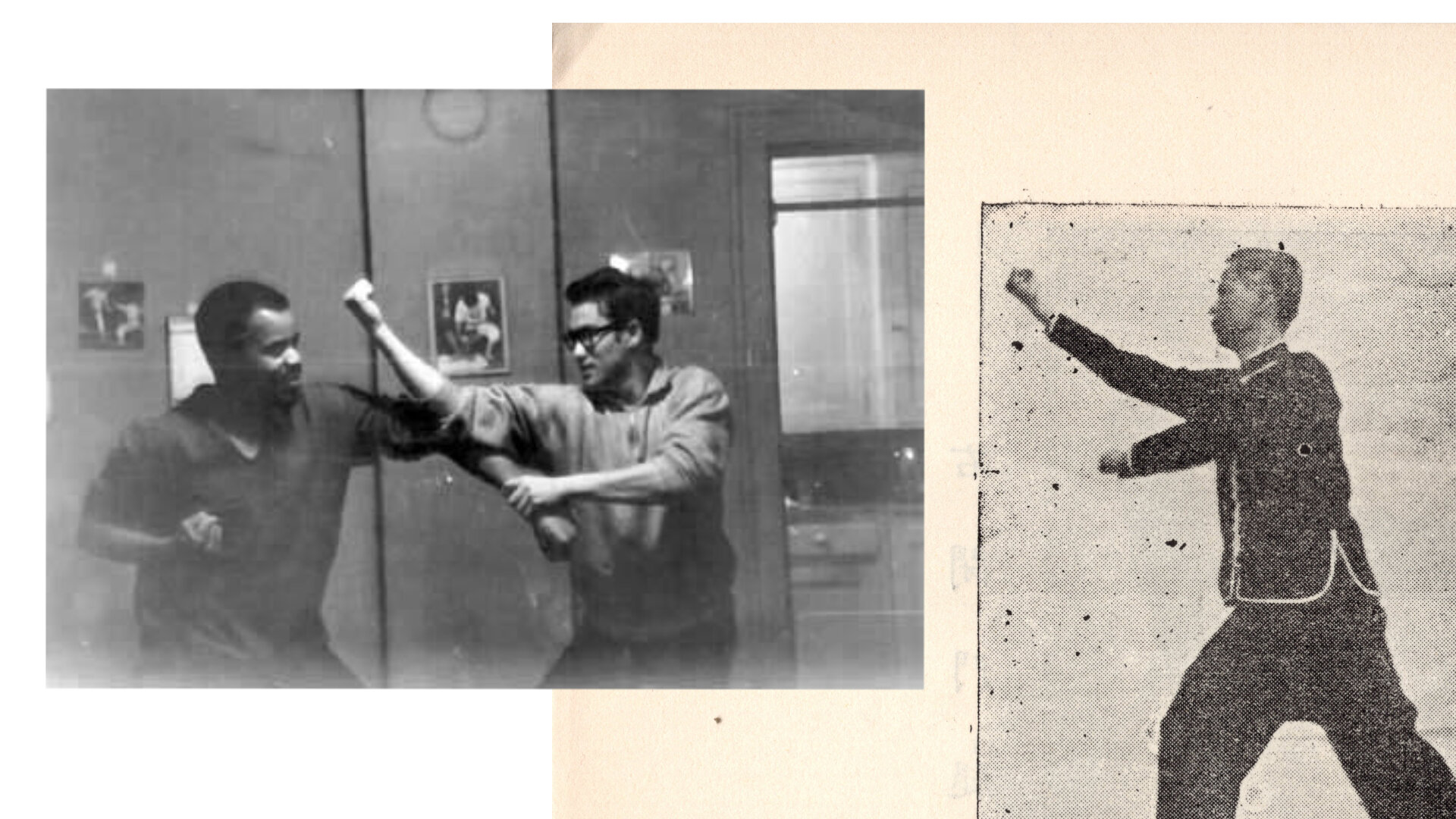
![Above: Bruce Lee’s personal copy of White Ape Leaves the Cave (白猿出洞), published in 1958, Volume 22 of Wong Honfan’s Northern Mantis Boxing series. [WA]](https://images.squarespace-cdn.com/content/v1/57c1bd8403596ec73f1a54c6/1608896958468-MOS6WET6RDLE43VBRFT8/lf+copy+7.jpeg)



![Above: A list of techniques Bruce wrote in the back of his White Ape volume. Technique number 1. reads:右崩捶右閉門腿 [Right Avalanche Punch, Right Door-Closing Kick]: A crushing back-fist move that simultaneously hits while also suppressing the opponent’s…](https://images.squarespace-cdn.com/content/v1/57c1bd8403596ec73f1a54c6/1609564659591-KEEKYLC8X39UF1C5VY2K/lf-2+copy.jpeg)





















